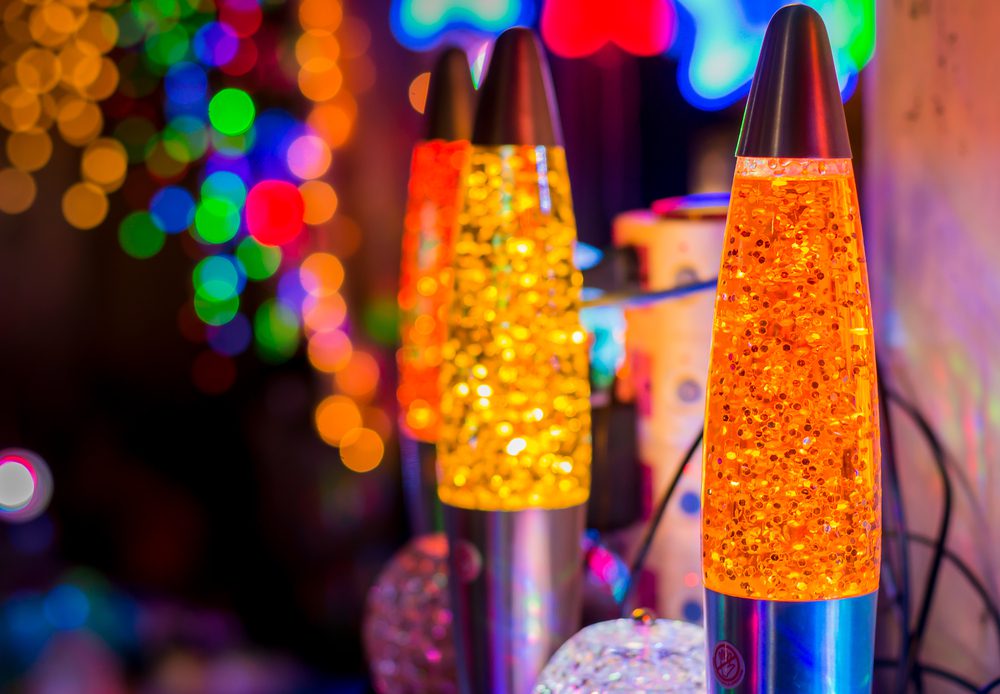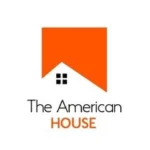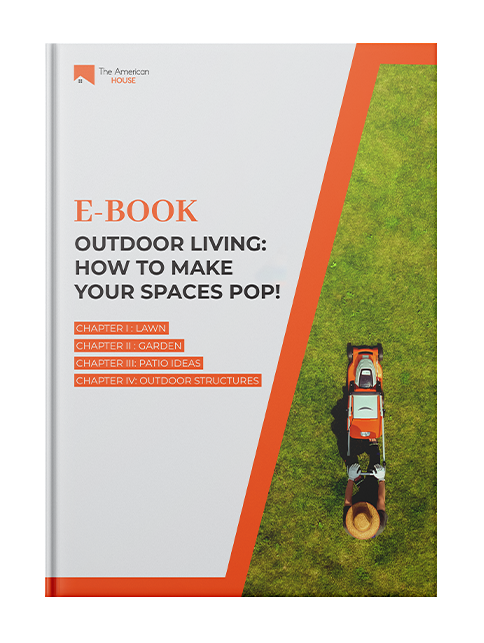The 70s interior aesthetic is the most influential style when it comes to furniture design. While some items have come back into style—velvet, for instance—some design trends are long forgotten.
The 70s were the end of the swinging 60s: Elvis Presley passed away, the Beatles disbanded, and governments aimed to keep the turbulence of the previous decade under control by promoting political conservatism.
In response, it spawned an era of liberation, new ideas, and extravagant styles. Often, the 70s are characterized by the disco ball, as disco music was born here. Jaws menaced moviegoers, and everybody was on roller skates.
When it comes to houses, they were one-story ranch-style or split-level and adorned with never-before-seen design choices (most of which were left in the past). But whether bad, good, or just plain tacky, home interiors were definitely unique. And since a little nostalgia is never a bad thing, let’s step inside the time machine and take a look at the 70s interior aesthetic.
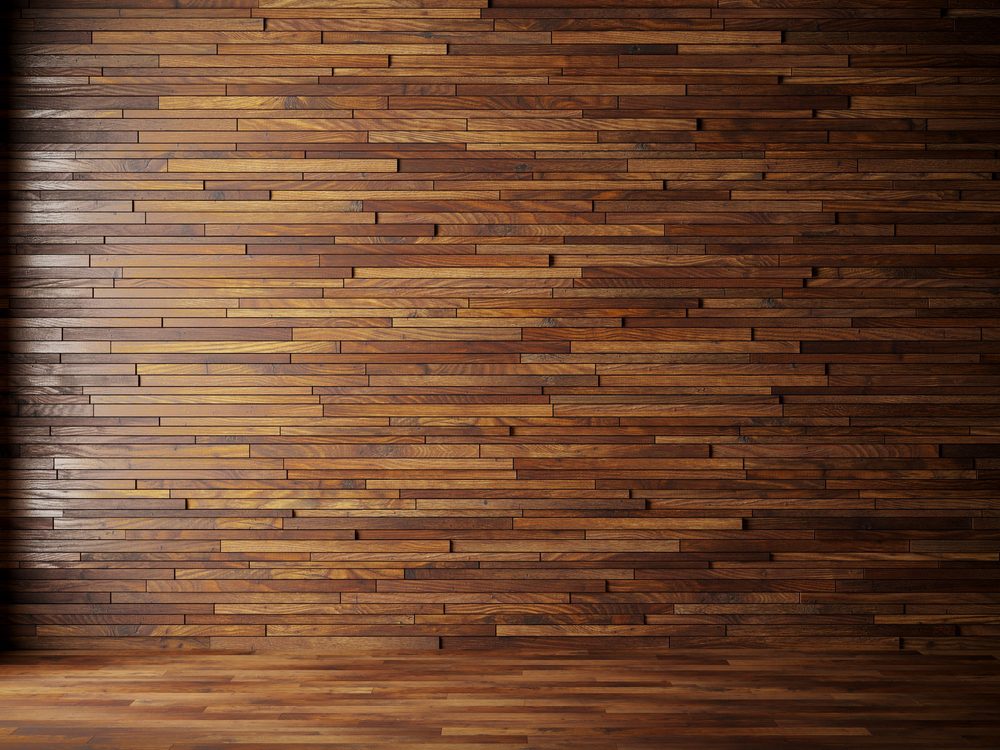
1. Wood paneling
Wood paneling is still common these days, but rather than the currently trendy shiplap or beadboard you may see around, the 70s version was typically made from anything but real trees and had a blatantly obvious fake grain.
It created a warm backdrop and was a versatile and budget-friendly option to quickly elevate your living room.
2. Linoleum floors
Another key element of the 70s interior aesthetic, linoleum floors, were extremely popular and lauded for enabling low-cost, durable, water-resistant, and easy-to-clean floors. There was no other kitchen or bathroom flooring back then that was nearly as ubiquitous as patterned linoleum.
This type of floor was particularly common in kitchens in modest working- and middle-class residences. It was likely a distinct shade of brown or harvest hold, or even an offensive medley of green shades and geometric shapes.
And, of course, there was almost always a crack that someone from the family would get snagged on multiple times a day.
3. Lava lamps
If it’s about the 70s interior aesthetic, it’s also about lava lamps. This groovy decor item was another key element of the era, and lots of houses had one.
In fact, lava lamps were so popular back then that, at their peak, more than seven million were sold around the world each year. Though there were cheaper imitations, a good lava lamp was composed of a metal base that housed a standard socket for a low-wattage, regular home-variety lightbulb.
4. Crocheted blankets
These lovely throws were crocheted in a repeating “granny” square pattern, using different colors that clashed. They were often made from scratchy wool and were better tossed over the back of the sofa than used to cover up during movie night.
It’s interesting that reinterpretations of the 70s interior aesthetic brought back these blankets, but they aren’t exactly what they were 50 years ago. Instead, they are made from softer materials, so it is comfortable to wrap yourself in them (here are some lovely options you may want to have on your couch).
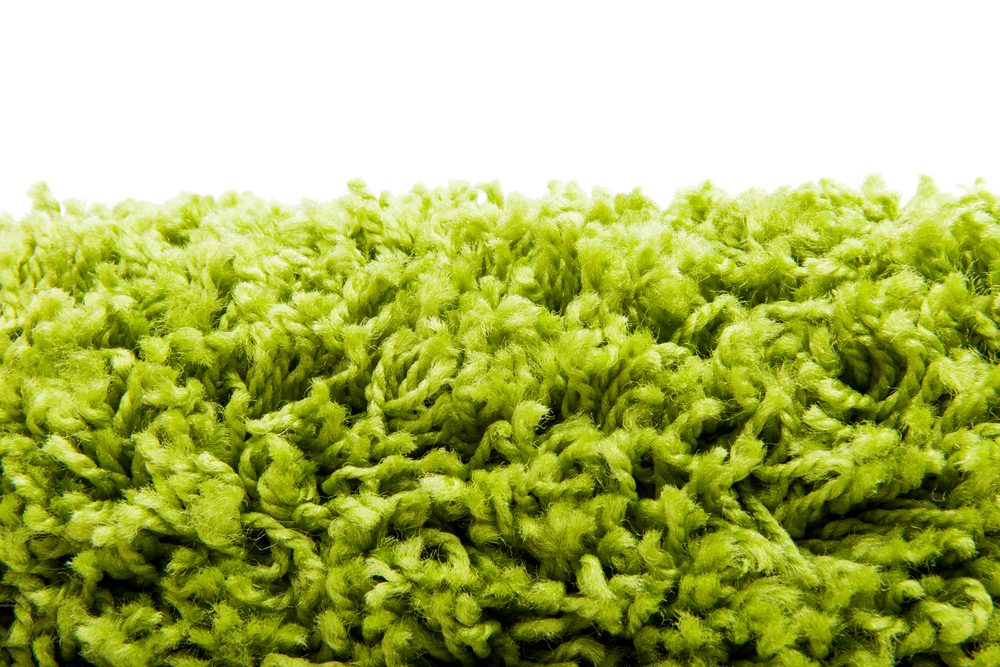
5. Shag carpeting
If the 70s interior aesthetic was about one trend, it was wall-to-wall shag carpeting, usually in eye-catching colors like bright orange.
During the 1960s, tumultuous events such as the Vietnam War and lots of social and political unrest produced a heightened desire for comfortable, safe-feeling interiors, which helped pave the way for shag carpeting’s prolonged popularity throughout the 20th century.
Basically, it was about creating womb-like spaces with soft textures and warm colors. Laying on a shag rug while getting caught up watching TV shows, playing video games with friends, or just lounging around was common, and it’s definitely a thing of that era.
Read on to discover other elements of the 70s interior aesthetic!
6. Statement stone fireplaces
Made of rough rock and typically taking up a whole wall, this trend wouldn’t have looked out of place in a hunting lodge. The fireplace is already the focal point of the room, but the added elements, like the orangy-toned stones and vents built in, made it look bulky and bolder.
In fact, back in the day, having a stone fireplace that took up almost a third of your wall was a way of incorporating rustic glamour and a key feature of the 70s interior aesthetic.
7. Patterned paper
According to the 70s interior aesthetic, if walls weren’t lined with wood paneling, they had to be adorned with paper splashed with bold and big geometric shapes in bright, contrasting colors. It was a common thing to have your walls decorated with psychedelic wallpaper and groovy plastic lampshades.
The 1960s and 1970s represented a peak period for many wallpaper manufacturers when sales were solid and designs were modern and bold. However, the oil crisis of 1973 led to a considerable reduction in the size of the industry worldwide, with many businesses closing their doors or being taken over by big international corporations.
8. Floating stairs
A floating staircase was a focal point on the set of The Brady Bunch. Even though we know that Mr. Brady was an architect, those stairs still looked a bit dangerous.
While they weren’t as common as other elements on this list because you had to live in a two-story house to have them, floating stairs are also part of the 70s interior aesthetic. Unlike traditional staircases that feature visible supports beneath each step, the floating ones give the illusion of hovering in mid-air.
9. Sunken living rooms
The 70s were a neighborly time, and conversation pits were specially designed to encourage socializing. As the name suggests, a sunken living room or sunken lounge is an area set into a sunken section of flooring. Occupants must descend into the space—traditionally furnished with custom, built-in couches—via a small set of steps.
These seating spots sunk a notch from the rest of the room and were inviting and cozy—as long as your guests didn’t break an ankle getting to them. Overall, it was a major element of the 70s interior aesthetic, and people who had this kind of setup in their homes were considered cool.
10. Rattan furniture
Once assigned to patios and the like, rattan furniture became an accent piece for living rooms and other interior spaces in the 70s. It made a fine pair with all the ferns and macramé that started turning up everywhere.
It’s no wonder why so many people had rattan furniture in their houses back then. It’s durable, lightweight, sustainably produced, and more affordable than other kinds of furniture. Moreover, rattan can be bent and shaped into nearly any form of furniture, including bedheads, accent tables, sofas, dining chairs, and many more.
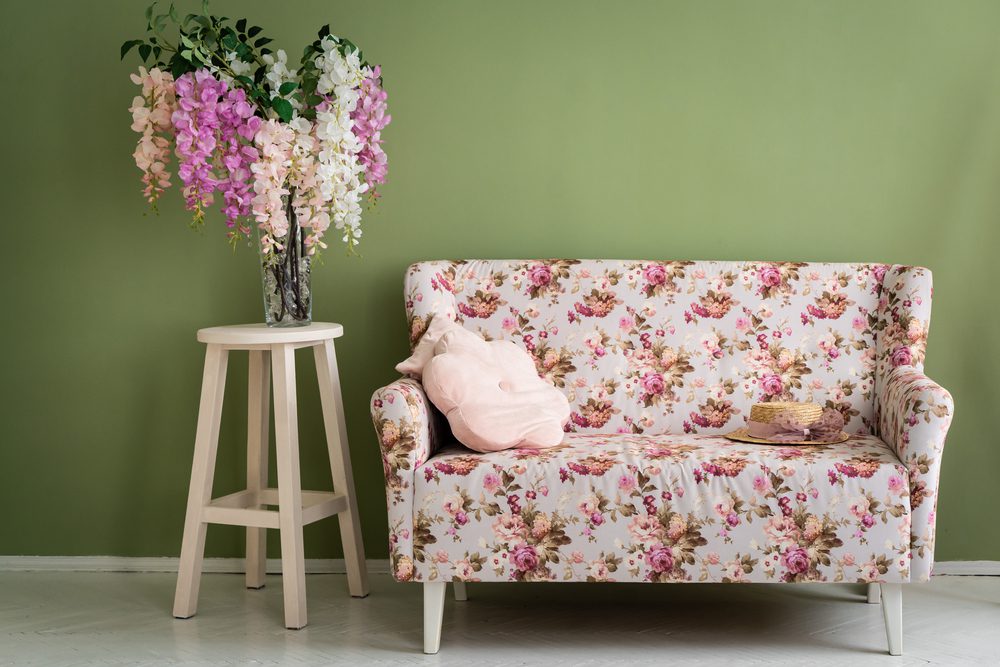
11. Floral sofas
Much the same as wallpaper, upholstery was a key element of the 70s interior aesthetic. You simply couldn’t overlook it when entering a room, as it tended toward being big, bold, bright, and busy as a bee in a field full of sunflowers.
However, where wallpaper leaned toward geometric shapes, furniture fabric was all about the florals. Colorful, funky, and eye-catching, a couch with a pattern like this wasn’t seen as excentic back then, but usual.
12. Textured walls
Whether you’re talking foiled or flocked paper or textured plaster, walls of the 70s interior aesthetic invite you to reach right out and grab them. Even the ceilings were textured. Also known as popcorn ceilings, they were very popular because the texture was great at hiding imperfections and even helped absorb sound between floors and walls.
If you liked our article on 70s interior aesthetics, you may also want to read 11 AMAZING Paint Colors That Are Trending in 2024.

